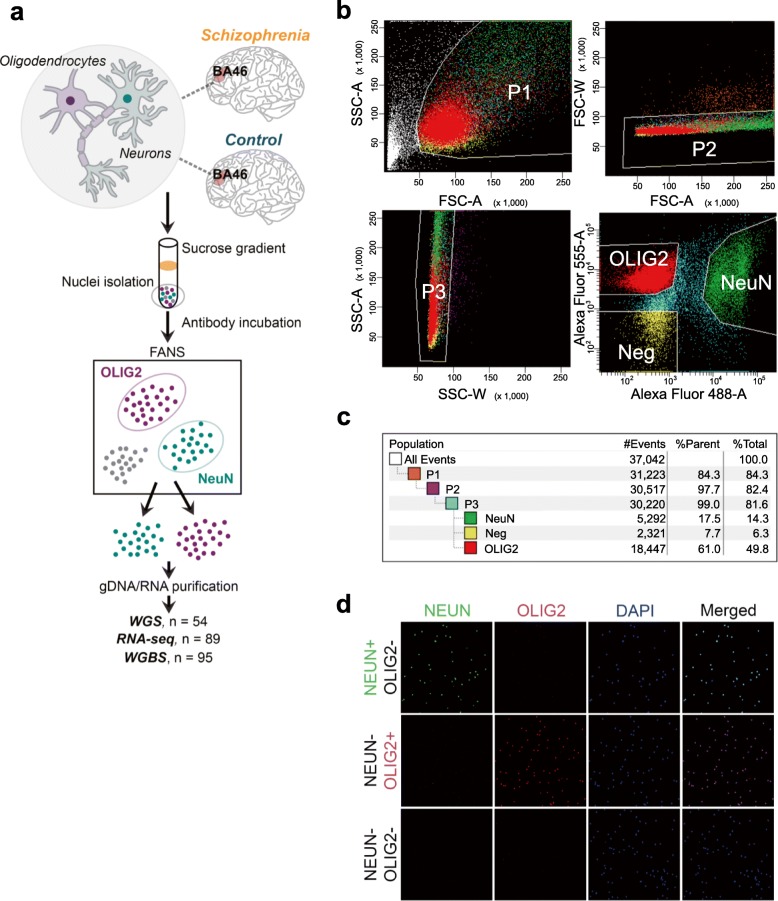Fig. 1.
Experimental design and FANS workflow example. a Postmortem brain tissue from BA46 was matched between cases with schizophrenia and unaffected individuals. Tissue pieces were processed to isolate nuclei and incubated with antibodies directed toward NeuN or OLIG2. The nuclei were sorted using fluorescence-activated nuclei sorting (FANS) to obtain purified populations of cell types. The nuclei were processed to obtain genomic DNA (gDNA) and nuclear RNA from the same pools. Nucleic acids then underwent whole-genome sequencing (WGS), whole-genome bisulfite sequencing (WGBS), or RNA sequencing (RNA-seq). b NeuN-positive (NeuN+) nuclei represent neurons within the cerebral cortex as few human NeuN-negative (NeuN−) cells in the cortex are neurons [23, 24] (e.g., Cajal-Retzius neurons). OLIG2-positive (OLIG2+) nuclei represent oligodendrocytes and their precursors [25, 26]. Isolation of nuclei expressing either NeuN conjugated to Alexa 488 or OLIG2 conjugated to Alexa 555. The nuclei were first sorted for size and complexity, followed by gating to exclude doublets that indicate aggregates of nuclei and then further sorted to isolate nuclei based on fluorescence. “Neg” nuclei are those that are neither NeuN+ nor OLIG2+. c Example percentage nuclei at each selection step during FANS. Note that while in this example more nuclei were OLIG2+, in other samples, the proportions might be reversed. d Immunocytochemistry of nuclei post-sorting. The nuclei express either NeuN or OLIG2 or are negative for both after FANS. DAPI labels all nuclei

